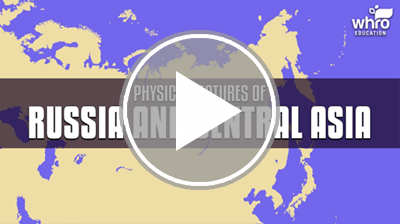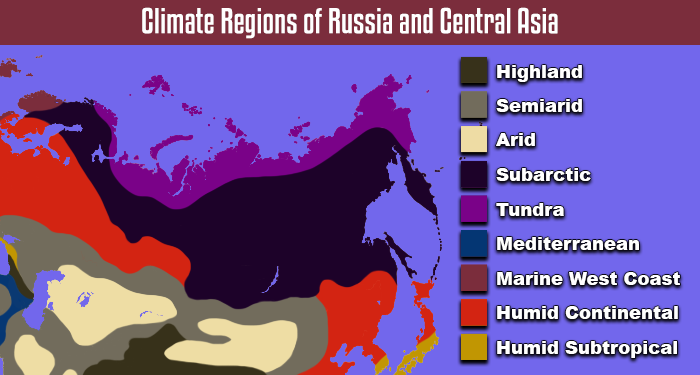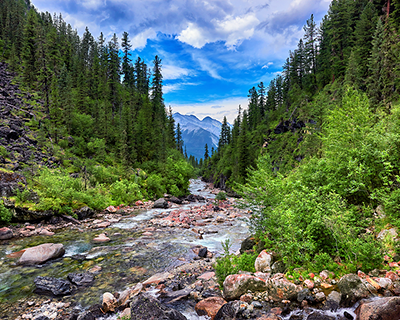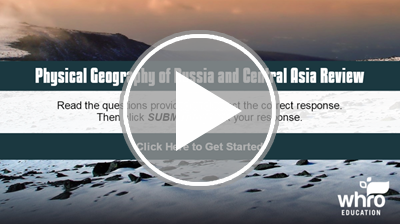Physical Geography of Russia and Central Asia
Physical Features of Russia and Central Asia

Russia and Central Asia is a huge region that spans two continents: Europe and Asia. This enormous region contains some of the world’s largest lakes, multiple mountain ranges, broad plains, and several rivers. In this interactivity, you will explore the physical features of Russia and Central Asia. Click the player to begin.
View a printable version of this interactivity or an ADA compliant transcript.
Climate Regions

Climate Regions of Russia and Central Asia: Detailed Description
Russia and Central Asia contains several high and middle latitude climate regions. A large tundra climate region is located in the far north, along the Arctic Ocean. The average annual temperature in the tundra is below freezing. Permanently frozen layers of soil, called permafrost, are common at these high latitudes. Trees and most other types of vegetation are unable to grow in the permafrost. Hardy mosses and lichens are the only plants that can survive this harsh climate.
A massive subarctic climate region is located south of the tundra. This region spans all of Russia, and covers more than half of Siberia. Subarctic climate regions are characterized by taiga vegetation. Taiga consists of coniferous trees like pine, spruce, and fir. These types of trees are strong enough to survive the long harsh subarctic winters. Most of the world’s taiga forest is located in Russia and Canada.

Taiga vegetation in Siberia
A humid continental climate region spans most of the East European Plain, which is west of the Ural Mountains. Humid continental climates experience all four seasons. Temperatures shift throughout the year, with warm summer months and cold winter months. The vegetation in this area includes a mixture of middle latitude forest and temperate grassland.
The southern part of Russia and Central Asia is dominated by a semiarid climate. This vast region extends across Eurasia, from the Black Sea to Northern China. This region is known as the Eurasian Steppe, and contains large expanses of dry grassland. The semiarid steppe borders an arid region in Central Asia, located east of the Caspian Sea. It also borders a highland climate region in the Caucasus Mountains.
Physical Geography of Russia and Central Asia Review

![]() Now that you have learned about the major physical regions, landforms, and water features of Russia and Central Asia, review your knowledge in this interactivity. Click the player to get started.
Now that you have learned about the major physical regions, landforms, and water features of Russia and Central Asia, review your knowledge in this interactivity. Click the player to get started.
